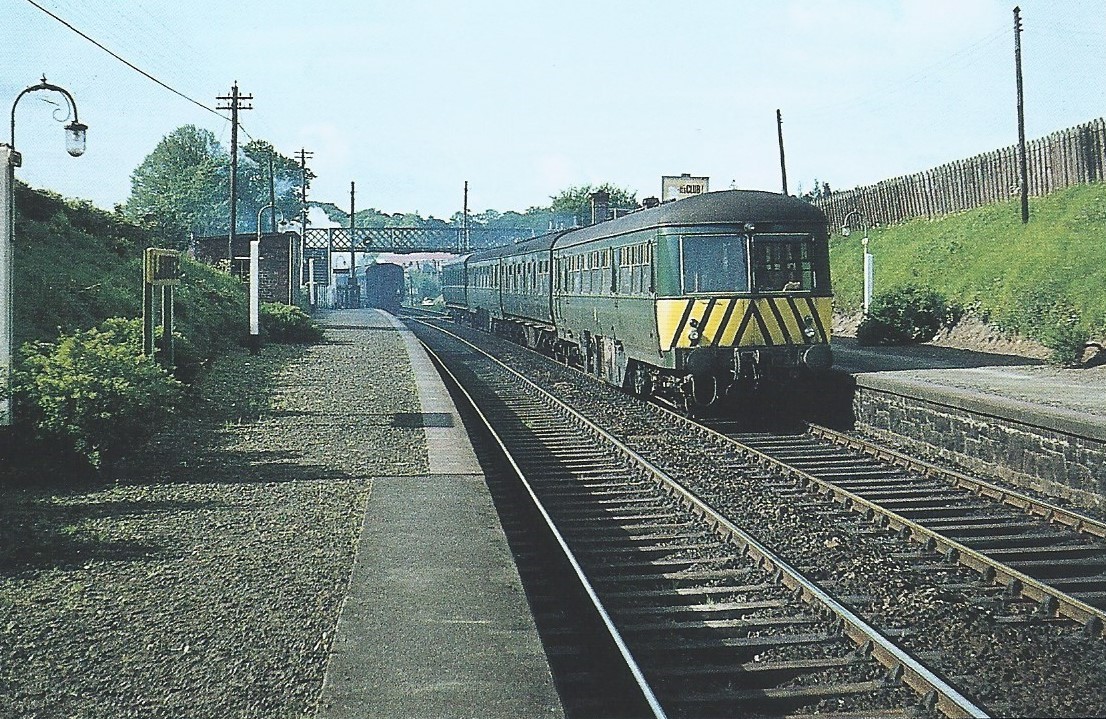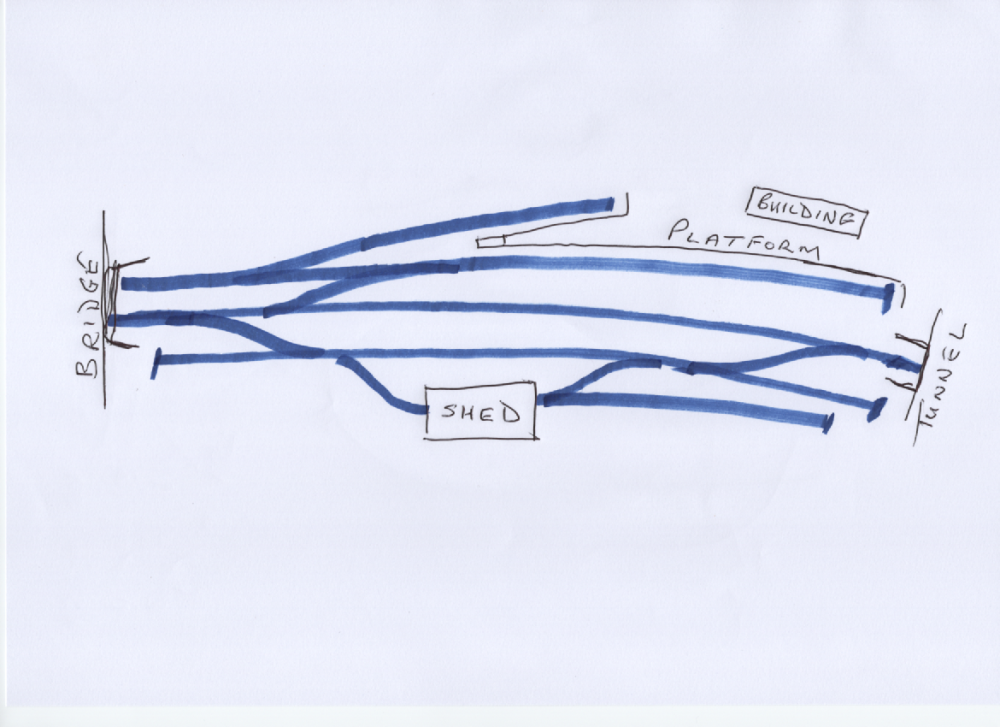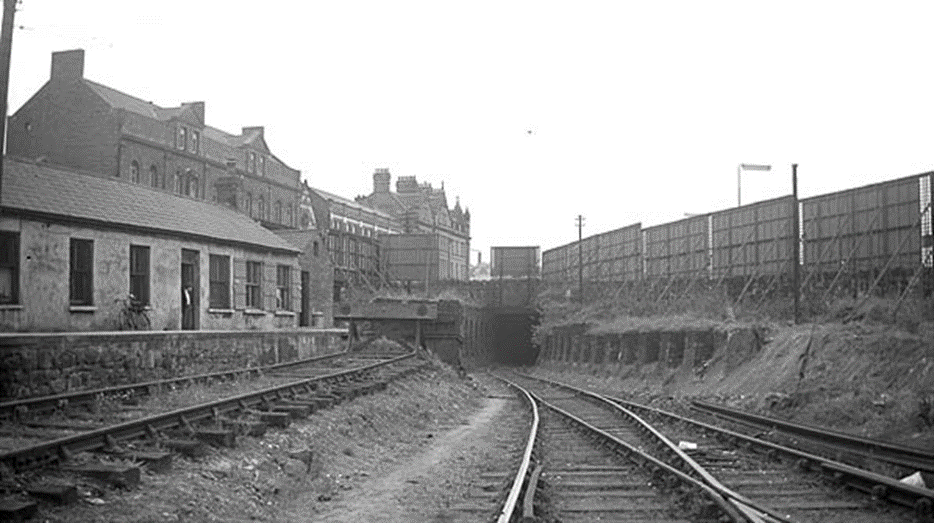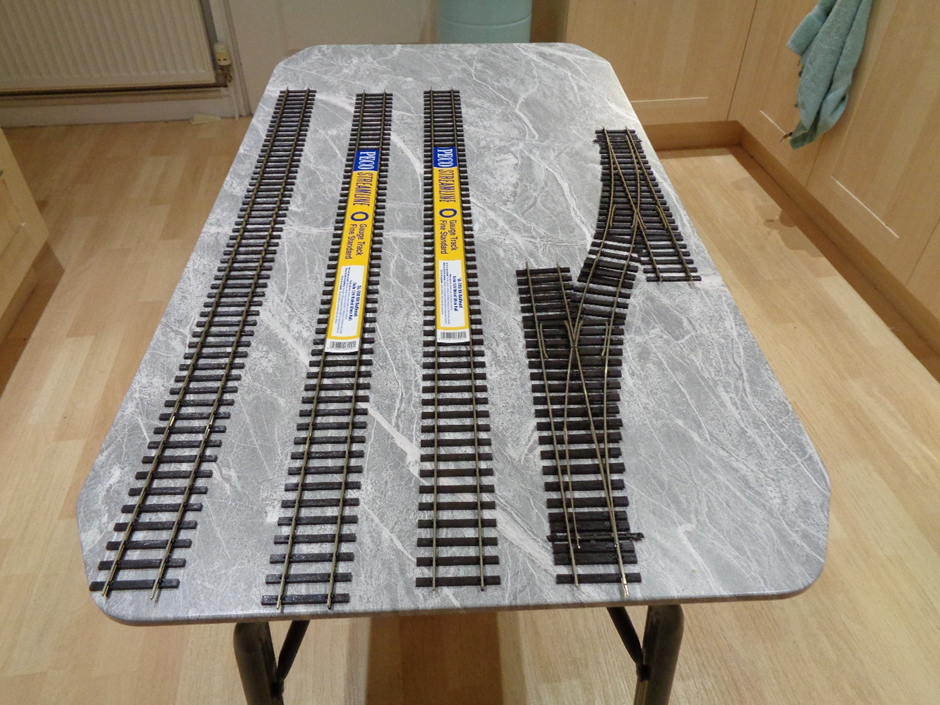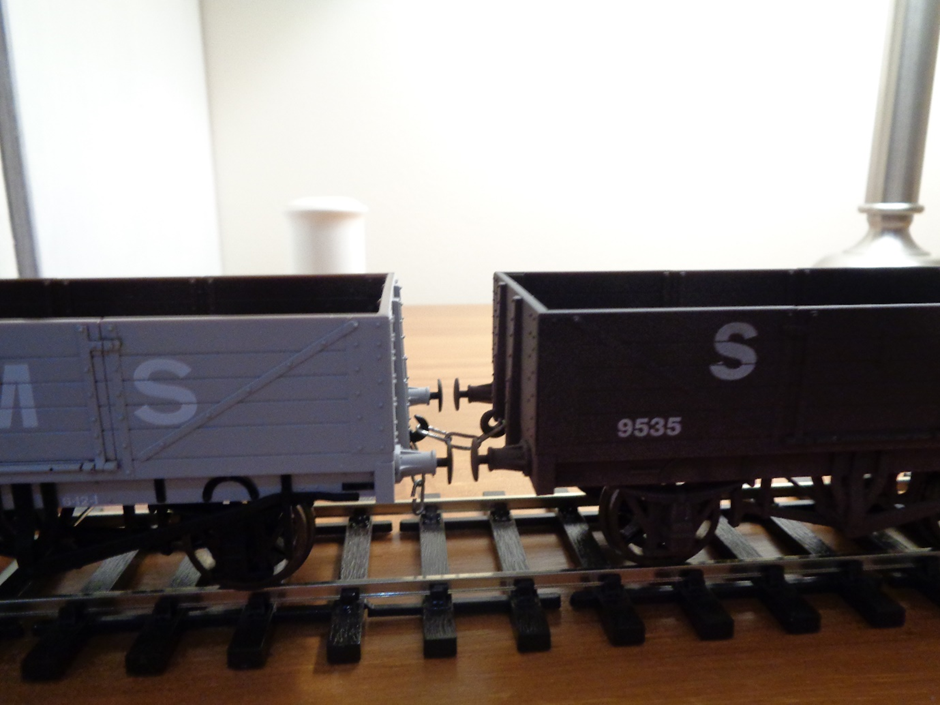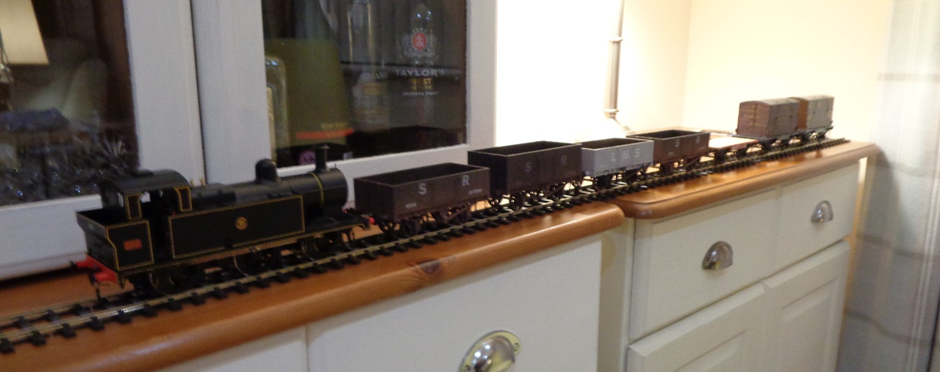-
Posts
433 -
Joined
-
Last visited
-
Days Won
3
Content Type
Profiles
Forums
Events
Gallery
Blogs
Store
Community Map
Everything posted by Lambeg man
-
Yes, I saw that last night and I agree it would not look out of place... Ha ha ha ha ha ha... For you yes, for me????? Only if it goes together with Airfix glue!
-
Thank you for that David. Did initially consider that, but like the cattle, sand and coal traffic, oil tanks "went over the viaduct", not as far as I am aware through the tunnel. Still....... you never know.... LM
-
.thumb.jpg.619b7e43fcb01ddf7c110aacc1ea31d3.jpg)
Deleting articles and when did the 121s become cab forward only
Lambeg man replied to Dave Dawes's topic in General Chat
I don't think YOU can delete an article, it is my understanding that only a MODERATOR can do that. On occasions when I realize I've posted a load of drivel (incorrect or irrelevant), IF it is your posting go to the EDIT button (the three dots in the top right hand corner), slect EDIT and then delete the content of the post, then SAVE. I think the 'cab forward' rule came in fairly early in their service because of sighting problems. JHB may know better. American loco drivers preferred 'cab rear' because it gave them greater protection at level crossing (much more common there than here) smashes. -
Thanks JHB. The wagon selection bought was all she had in stock that looked slightly 'Irish'. By the way she has had this lot "on sale" for as long as I can remember, so she was a happy bunny. The containers are an LMS and a GWR furniture type. Not sure if either ever popped up in Ireland, but they can be repainted (I hope) into the standard BR type that did appear in Ireland via Belfast Docks. I think the tunnel was deepened in 1962 to accommodate them. At present I have not the time for kit building AND putting the layout together. Bearing in mind this all started with "where would No. 19 TRULY look at home?" without having to model York Road or lay track in a sea of cobble stones, that is why I hit on Queens Bridge. Now then, if staying accurate to Queens Bridge, the only through traffic was shipping vans. Coal came from the Low Docks on the other side of the Lagan, cattle got off at Mayfields where the sand traffic from Coalisland was also unloaded. I would like to know more about the apparently rail connected Goods Shed which faced onto Laganbank Road, in terms of what traffic it was built for. However, RULE ONE. I said "no passenger carriages" but never say never again! There may well be coal and other aggregate traffic through the tunnel on my layout... Whatever rolling stock ever appears there will be a clear need for No. 19 to be helped by either a GNR or NCC 0-6-0, but the darling of it all will be a GNR 'RT'. Sweet dreams are made of this.....
-
Thank you. Indeed, a quick win is always a winner! Though one of the H&W shunters (e.g. No. 16) might also feature. That would be good news. For the present kit building is way in the future. Alphagrafix do a GNR 'Y' van of the type that had the roof ventilators removed specifically to go through the Queens Bridge tunnel. In respect of Dapol RTR, have examined the web site and none of their vans jump out as looking "Irish". LM
-
Hi David, Thank you for that. Below is a rough sketch of what I have in mind. 12' between the scenic breaks. It can not be seen in the photo, but the 1931 OS map shows there was a bay platform at Queens Bridge with a spur line running off it back and under the Albert Bridge. The three 4' x 2' main boards are already built and I envisage providing hidden sidings on 4' long narrow hinged end sections at both ends to allow through running.
-
Thanks Jim, that is where I got the photo from! Sorry, credit belatedly added. Modelling that station building should be fun. A rural looking building right in the middle of the city!
-
Thanks for that Galteemore. Yes, anything in 7mm is impressive compared to 4mm. Longer term ambition is an 0-6-0 to be added, either an NCC 'V' lookalike or a GNR 'PG'. In concept the project will of course be a 'portable' layout that can be assembled in the house or the garage when the better weather returns. I can not currently source any RTR vans, which would have been the main consist through to the docks. To provide a scenic break at the other end of the layout the Albert Bridge will be moved nearer and East Bridge Junction will be out of sight. The signals will be provided as they were there purely to project the Junction when block working was in use for the passage of passenger and oil trains.
-
Last Tuesday a relative came to visit and stay with my wife for a few hours, so I took the occasion to have a break. But what to do in 2 hours? So I went to the local model railway shop, Great Eastern Models in Norwich. I wanted to find out a bit about 'O' gauge. I was chatting to the owner and had a print out of the Dapol NCC 'Jinty'. What was all this "DCC fitted" and "DCC Ready" all about? She looked at the pictures and said "We have one of those in stock." My reply "You have an Irish 'O' gauge model engine in stock?" She "Is that what it is, Irish?" It was in a selection of Dapol 'Jintys' in various British liveries that I suspect Dapol mickey finned her. I examined it. It was in a reduced 'sale' of 'O' gauge stock and trackwork. I left 20 minutes later with the said NCC 'Jinty', some goods wagons and track (all decently reduced from the RRP). I felt there was some kind of divine intervention in that of the cuff I go into a model shop in Norwich and was offered a ready 'adapted' Irish model. Why was I asking about 'O' gauge in the first place you may well ask. Caring for my wife is a full on daily operation that leaves little time for railway modelling. The large 'OO' layout is housed in the garage and is currently moribund. So my thoughts had turned to a much smaller layout that could be worked on in the house. Previous experience with "shunting layouts" in 'OO' has always shown poor performance and the persistent need of the 'Hand of God' to keep things moving, especially with older locomotives. So how about say an 8 foot layout but in 'O' gauge? So that evening I'm running my new locomotive up and down a section of track on the kitchen table, thinking where can I base a layout that would fit in with NCC No. 19. Initial thoughts were towards a fictitious branch terminus somewhere in County Antrim. York Road was out of the question and thoughts of the Belfast Harbour lines threw up an image of track surrounded by cobblestones. Then inspired with a few measures of electric soup I suddenly remembered this photo. Photo courtesy of Ernie Brack This is Queens Bridge station prior to demolition in 1960. The 'tunnel' (or 'subway' as the GNR referred to it) in the middle leads to the lines of the Belfast Harbour Commissioners. Note, no cobble stones but a freight only line connecting the Maysfields Yard with the Dock lines. Other photo's show goods vans in the upper left hand siding. The station was actually listed a as a Goods Station in GNR days. So, a layout that can have 'through' running and shunting, while providing a perfect backdrop for No. 19 - PERFICK! While the last passenger service ran in 1885, the 'Station Building' on the left is clearly still in use as offices. So sadly no passenger stock will appear. I have the 1931 track plan which shows signals and some form of goods shed facing onto Laganbank Road. Several 4' x 2' baseboards will quickly be released from current 'OO' duties and each can be brought separately into the kitchen to be worked on. Initial experiments with 'O' gauge points and track indicate I will need at least 12' to provide a realistic vista. The table is roughly 4' x 2' and it will be seen that points take up a lot of room. On the plus side I am blown away at the detail of the Dapol wagons, the sprung buffers and especially the sprung 3-link chain couplings. Gone are the Hornby hook and bar attachments. Sorry, slightly blurred photo of No. 19 and current stock. Really loving the experience, like starting out from scratch as a kid but at 67 years of age being much better financially endowed to buy what I want! Now, what to do with all that 'OO' stuff?
- 74 replies
-
- 18
-

-

-
Hi Colin, may I also add that a Baltic heading for Ballynahinch Junction would be very unusual. Because of their weight the Baltic's were restricted to the Belfast-Bangor line.
-
Thank you Leslie, I stand corrected.
-
As a paid up member of the 'Hacking Club' I have to ask did not the GS&WR build some similar looking locomotives at the turn of the century? A narrow boilered 4-6-0 which were called "Long Toms" for some reason. Page 121 of the 'Bible'. Class 362, only three built and all withdrawn by 1928. Not my era but might float someone's boat.
-
.thumb.jpg.619b7e43fcb01ddf7c110aacc1ea31d3.jpg)
Ernies Massive Irish 1930's to 2005 Photo Archive
Lambeg man replied to Glenderg's topic in Photos & Videos of the Prototype
Very rare! Thanks for posting Ernie. The van is GNR Departmental no. 8431 which was fitting with vacuum cleaning equipment. It was a conversion from a 'W 4' Full Brake van built circa 1881. It seems to have spent the 1950's against the buffer stops of one of centre roads (no platforms) at Amiens Street when the centre roads were used for servicing Railcars prior to the construction of Fairview. It appears it may be on its way to Dundalk where it appears in a photo of withdrawn stock in your "GNR" album in your online collection. -
Where did this system originate from, British? Irish? Elsewhere? Has it a name?
-
.thumb.jpg.619b7e43fcb01ddf7c110aacc1ea31d3.jpg)
Garda ERU / ATLAS training.
Lambeg man replied to Broithe's topic in What's happening on the network?
Were they aimed at Broithe? Me and Galteemore need to know. Not that either Broithe or Galteemore ever tell me anything that's going on! Sh*t, what was that!!! -
.thumb.jpg.619b7e43fcb01ddf7c110aacc1ea31d3.jpg)
Garda ERU / ATLAS training.
Lambeg man replied to Broithe's topic in What's happening on the network?
Quite why you were doing them defeated me. I thought you understood that I am ex-REME (Royal Electrical and Mechanical Engineers), the Corps colours being Red/Blue/Yellow. Back in my day (1972) these translated into Red for the blood we never split, blue for the seas we never crossed and yellow for the large streak up or backs! The Corps motto was ARTE ET MARTE which was similar to the HGC motto of "Who Dares Wins" except our's was "Who cares who wins". -
.thumb.jpg.619b7e43fcb01ddf7c110aacc1ea31d3.jpg)
Garda ERU / ATLAS training.
Lambeg man replied to Broithe's topic in What's happening on the network?
Unfortunately Broithe is sufficiently well informed on railway matters to realize that the vast majority of ex-railway vehicles that made it into agricultural use after withdrawal were in fact GOODS vans, not carriages. Hence his apprehension that he has employed two goons who assume a every shed is a former PASSENGER CARRIAGE. I admit the failing on part of the contract in continually shouting "I've haven't got any goods van diagrams" may unsettle him. Still, let's wait and hear his whole view on this. So Broithe, a quick customer survey question when you have the time... A. Do you feel safe with Galteemore in front of you and me behind? or B. Do you wish you never started this thread? -
.thumb.jpg.619b7e43fcb01ddf7c110aacc1ea31d3.jpg)
Garda ERU / ATLAS training.
Lambeg man replied to Broithe's topic in What's happening on the network?
That's because I've got you at the FRONT going on every ten minutes or so "Is that an old Ulster or a Sligo Leitrim carriage body in that field in front of us?" And poor old Broithe is wondering why the hell he ever employed us! -
Many thanks for that. I would have expected the number to be higher given the 'cheapness' the line was built, curves, gradients and the avoidance of building bridges where a level crossing would suffice. As a former BR crossing keeper on the Norwich-Cromer line, the service frequency on the SLNCR would meant the crossing staff would not have ever had TOO busy a day! LM
-
Just as a matter of passing interest, how many gatekeepers did the SLNCR employ? Or to put it another way, how many STAFFED gated crossings were there between Enniskillen and Colloney?
-
.thumb.jpg.619b7e43fcb01ddf7c110aacc1ea31d3.jpg)
Garda ERU / ATLAS training.
Lambeg man replied to Broithe's topic in What's happening on the network?
Precisely the reason myself and Galteemore hide our true identities when looking after Broithe's welfare. BTW, Galteemore goes to the front. -
.thumb.jpg.619b7e43fcb01ddf7c110aacc1ea31d3.jpg)
Ernies Massive Irish 1930's to 2005 Photo Archive
Lambeg man replied to Glenderg's topic in Photos & Videos of the Prototype
I was joking. The M 96 thread was a hoot! -
.thumb.jpg.619b7e43fcb01ddf7c110aacc1ea31d3.jpg)
Ernies Massive Irish 1930's to 2005 Photo Archive
Lambeg man replied to Glenderg's topic in Photos & Videos of the Prototype
Yes I agree. This website is about discussing Irish Railways and the modelling of them. It is not about WW1 British Naval history, The M 96 or the military history of Lambeg Man and Galteemore. Can contributors please stay on topic. Thank you... LM -
.thumb.jpg.619b7e43fcb01ddf7c110aacc1ea31d3.jpg)
Ernies Massive Irish 1930's to 2005 Photo Archive
Lambeg man replied to Glenderg's topic in Photos & Videos of the Prototype
A Lancaster bomber was over Berlin ready to drop its bombs. However the aircraft was being the subject of heavy flak. Rear Gunner to Navigator: "Jeassus Mick, I've never known the flak to be so heavy!" Navigator to Rear Gunner: "I'm with you Seamus, thank f**k Dev kept us out of this!" -
.thumb.jpg.619b7e43fcb01ddf7c110aacc1ea31d3.jpg)
Garda ERU / ATLAS training.
Lambeg man replied to Broithe's topic in What's happening on the network?
Don't worry, me and Galteemore are watching your back.
.png.c363cdf5c3fb7955cd92a55eb6dbbae0.png)
